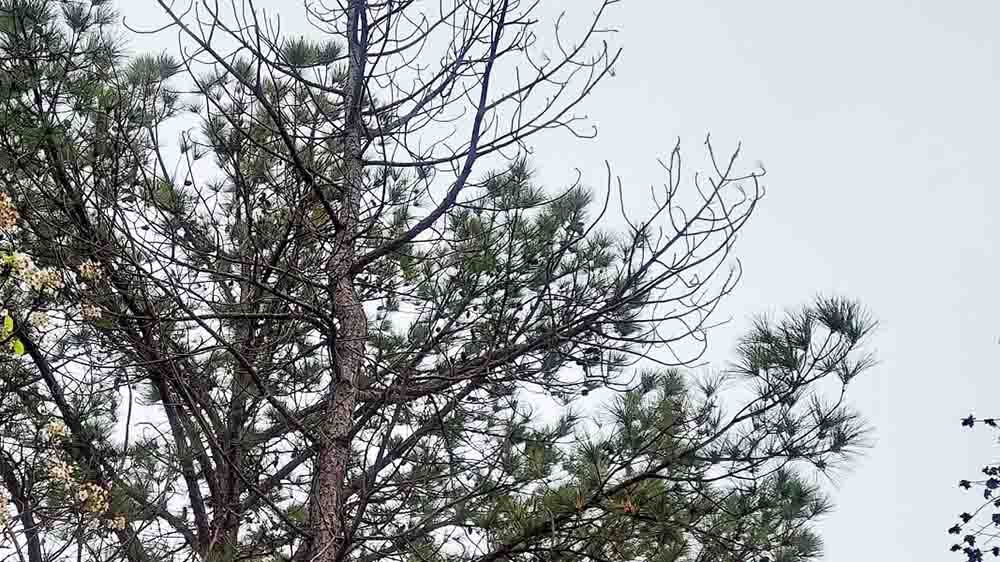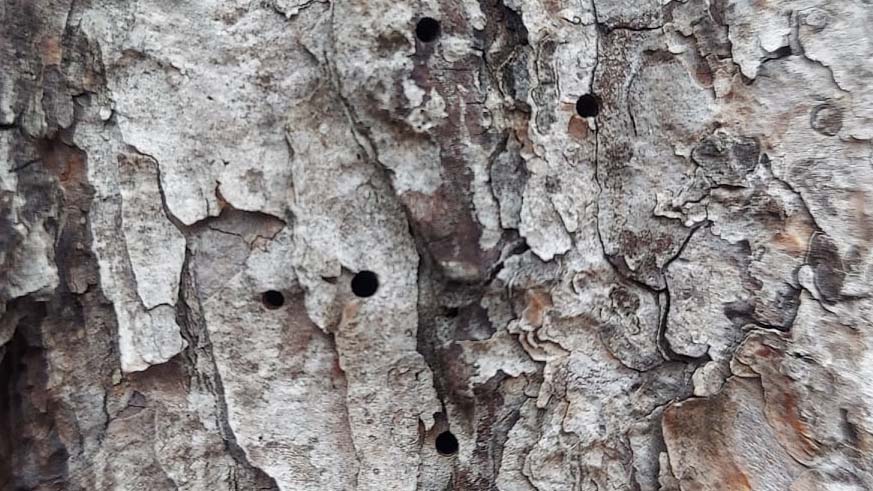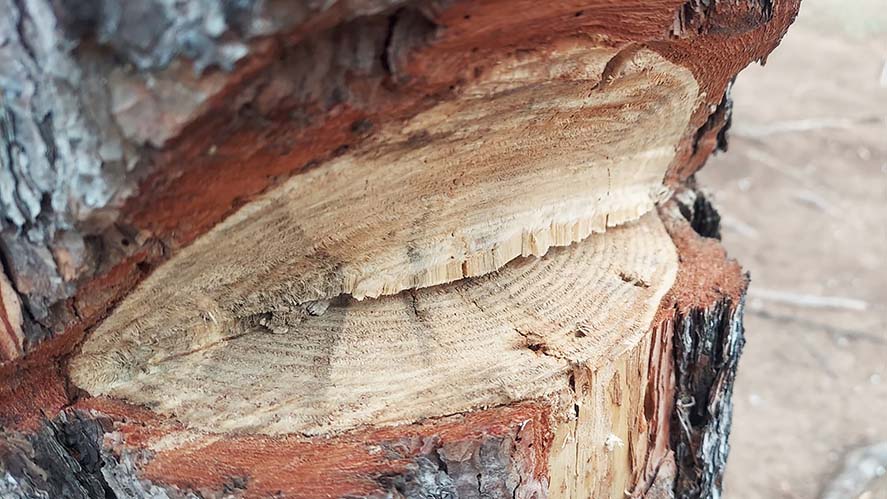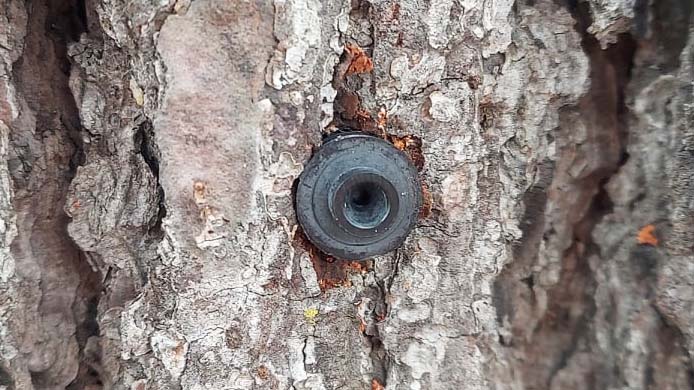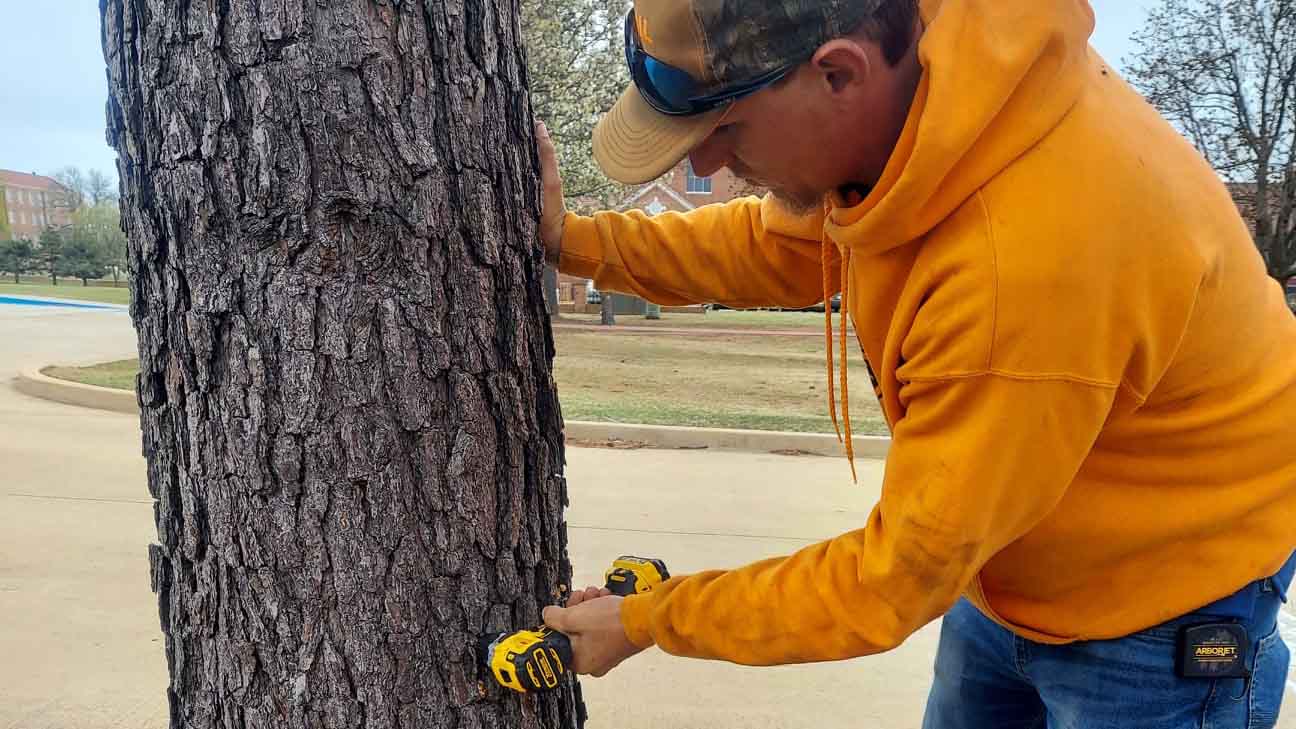University Teams with Pottawatomie County Extension to Treat Campus Pine Trees
April 13, 2022
William Gordon, Master Gardener and groundskeeper at OBU, keeps a close eye on the campus. Over the past 18 months, he and his team have been dealing with a decline in many of the pine trees around the University’s Bison Hill home. With a few of the trees already lost and conventional methods and treatments not turning things around, they knew it was time to seek other treatment options.
Gordon reached out to the Pottawatomie County Oklahoma State University Extension office to consult on the issues they were having with the pine trees. He and his crew then removed a wedge from an already dead pine tree and sent it to the extension office for analysis. When the wedge was cut, bores and blue streaking were visible in the wood, tell-tale signs of both beetle infestations and also of a dying pine tree.
After consulting with the OSU Extension center, Gordon contacted Arbor Masters, a tree and plant care company out of Oklahoma City. It was determined that the campus pine trees were dealing with several diseases, including Diplodia Tip Blight, Dothistroma Needle Blight, Pine Wilt Disease and Beetles of Pines.
Clinton Anderson, a certified arborist with Arbor Masters from Mansfield, Texas, began a course of injection treatments April 11 for the University’s crop of pine trees. He was also joined by three other arborists to complete the treatments around campus, including Jill Askins and Jacquelyn Palmer, who are both from Missouri, and Steven Burt. The trees are being injected with a dose of 1,600 milliliters of TREE-age R10 insecticide and 800 milliliters of Propizol fungicide using micro-injection technology. The injections will provide two years of treatment for the pines. Overall, the University is treating between 50 and 60 pine trees.
The injection treatment process involves several steps. First, the tree trunk is measured. Second, holes are drilled into the tree, with the number of holes drilled varying based upon the tree’s diameter. Third, plugs are inserted into the holes to keep the chemical inside the tree and to attach the injector. Fourth, the injector tube is attached and injections commence at 120 pounds of pressure per square inch. The chemicals are restricted and application may only be made by a trained professional.
Gordon and his team are optimistic that through these treatments, and through the consultation and partnership with both the Pottawatomie County OSU extension office and Arbor Masters, the crop of pine trees on Bison Hill will survive and thrive for many more generations to come.
In 2017, OBU was awarded a level I accreditation by the ArbNet Arboretum Accreditation Program and The Morton Arboretum for achieving particular standards of professional practices deemed important for arboreta and botanic gardens. The ArbNet Arboretum Accreditation Program is the only global initiative to officially recognize arboreta at various levels of development, capacity and professionalism. At that time, the University boasted 134 different species of trees and a database of more than 300 trees and shrubs.
OBU has also been recognized multiple times as a “Tree Campus USA” by the Arbor Day Foundation for the University’s commitment to effective urban forest management. The Tree Campus USA program honors colleges and universities for effective campus forest management and for engaging staff and students in conservation goals.
Photos courtesy of Pottawatomie County OSU Extension office.
